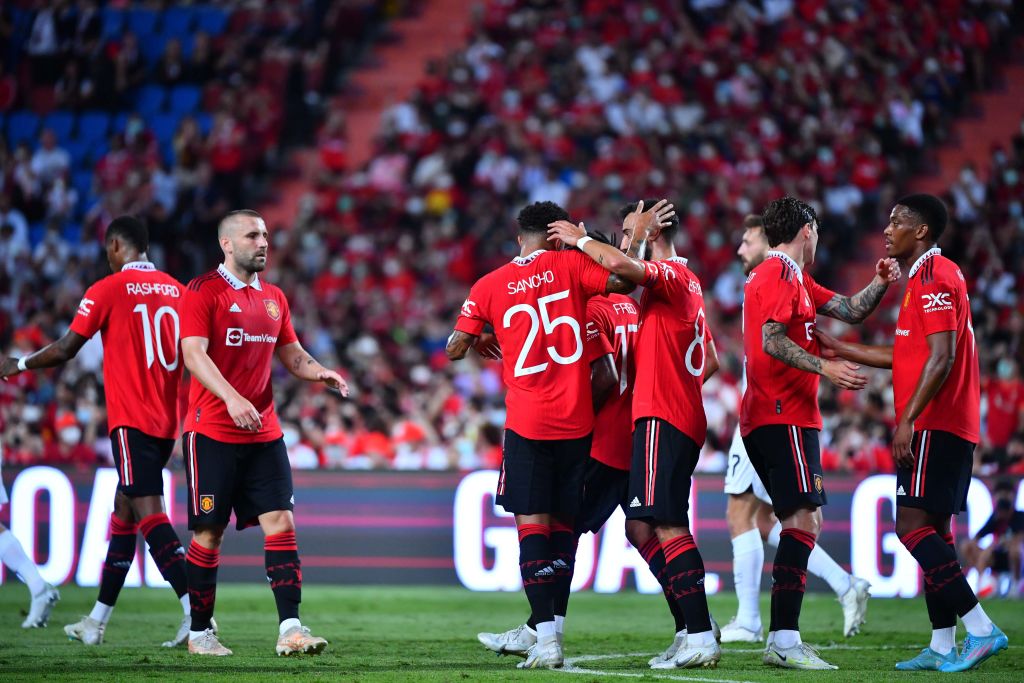Manchester United are a club that maintains a philosophy of fast, exciting, attacking football. Since Sir Alex Ferguson, fans haven’t seen that football being played until Ole Gunnar Solskjaer took charge, and he implemented a quick build-up style of play. However, last season, everything went downhill. What caused this, and what are the key points that Erik ten Hag must consider ahead of next season?
The Previous Season
The Red Devils had the perfect start to last season, a 5-1 victory over rivals Leeds United. United came out with the intent to play an attacking, dominant style, and they did just that. Fernandes scored a hat trick, and United created countless chances.
After this victory, United went on to draw 1-1 with Southampton, and beat Wolves 1-0. Following this game, their season changed as they went on to sign one of the best players of all time, Cristiano Ronaldo.
His return started off well, his 2nd debut was in a 4-1 win vs Newcastle followed by a 2-1 victory against West Ham United. However, Manchester United then went on a 4 game run without a win as Ronaldo failed to score in any of these games.
This was the first sign of the team’s over-reliance on Ronaldo when in the side. Whilst it isn’t down to the ability of the players, it’s due to the tactical changes that Ronaldo brings to a team, as discussed in the previous post.
The use of Ronaldo as a ‘focal point’ was detrimental to the side, he was a player who was unable to perform in the fluid brand of football that United set out to play. It turned worse under Ralf when he constantly changed the setup of the side, further costing more points.
Why Fluidity?
Many ask why we need a fluid setup, and why can’t we just leave it to Ronaldo to score all the goals. The short answer is that it is unsustainable to have one source of goals in a side, as it’s inevitable the source will eventually dry up. This was seen last season as Ronaldo went on many goal droughts, and scored 50% of his goals against two teams. Further, he didn’t score against a number of opponents, further highlighting the importance of multiple sources.
Opposition analysts also look at how they could isolate a player in a game, such as forwards who provide a large goal threat. It’s much easier for them to isolate one player (Ronaldo) out of the game, than it is to isolate many players (Bruno, Sancho, Rashford, Martial, Ronaldo). Having a fluid attack provides that, especially the way that Erik ten Hag and Ole set up the side. The four attackers would constantly interchange and swap positions, making it hard for the opposition to man-mark or isolate them.
This is what United appeared to do so well in their pre-season friendly vs Liverpool. In the first half, the front four were constantly interchanging and had an explosive nature to their play. While Sancho mostly played on the right, his goal came from the left when he swapped with Rashford, and Martial was also able to press high and run down the right channel for his goal. With Ronaldo in the side, the team are unable to play like this as he’s limited to CF, hence our chance creation and overall output severely drops with him playing.
What must ten Hag do?
ten Hag must bring back the fluidity and speed of United’s attack, as it is the best way for them to score goals. With the potential sale of Ronaldo, he may also find it much easier to do this, as he won’t be under constant media and club pressure to play him.
However, if Ronaldo does go, ETH must put pressure on the board to sign another forward. Gianluca Scamacca appears to be a very good option to be United’s 9 as he has the appropriate skillset required. He’s been linked with a move away from Italy to West Ham, so Manchester United could attempt to hijack the deal.
The other option is bringing Martial back to life. After a nightmare season, he looked very promising in the friendly win vs Liverpool. He was lively both on and off the ball, and has the key fundamentals to play in the system. Getting Martial back to his best could have United fans watching the attack that they were meant to have in 2020.

Jadon Sancho is another player who will be key to any success that Manchester United have in attack. The tricky winger will prove to be useful on the right with his high change creation from wide and half spaces. He impressed vs Liverpool with his ability to beat his man with ease and supply good delivery into the box, as also seen in training. Mid-match, his interchanges with Rashford can disrupt opposition defences as they don’t know who they’ll be up against in different phases.
Erik must also use the fullbacks effectively in his system. Luke Shaw and Diogo Dalot have the ability to overlap and invert, something which ETH uses all the time in his setup. As Shaw moves wide, Dalot takes up an inverted position and joins the midfield, and vice-versa.
This setup can prove to be very effective, as seen in the Twitter clip, as Dalot’s two footed nature allows him to easily create chances in the middle with a single pass. This allows United to build up quickly and directly.
Overall, ETH is setting up the side so far to be a fluid, dynamic, direct side who attempt to constantly be on the front foot in games. There are some issues that need to be addressed such as the lack of creativity from the left and the play around the box from our CMs, but it will all come naturally as the team learn the system better.




